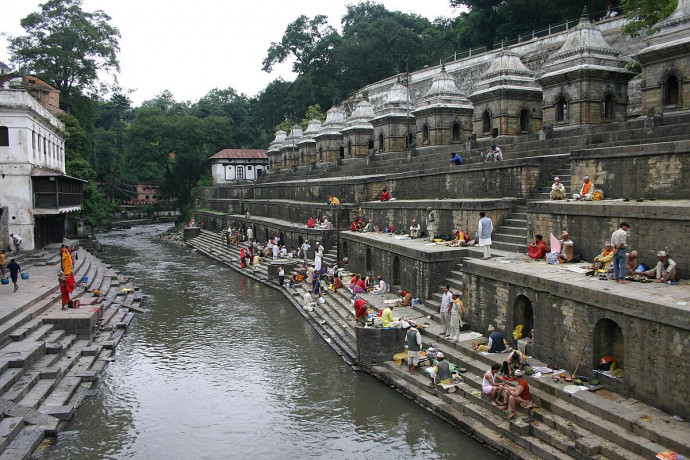Bagmati River: A Lifeline Weaving Through the Heart of Nepal Professional
Nov 30th, 2023 at 08:43 Blogs Kathmandu 302 views Reference: 1166Location: Kathmandu
Price: Contact us
Bagmati River: A Lifeline Weaving Through the Heart of Nepal
Introduction:
Flowing gracefully through the heart of Nepal, the Bagmati River stands as a symbol of cultural heritage, spiritual significance, and ecological vitality. Originating high in the Himalayas, this river meanders through the Kathmandu Valley, leaving an indelible mark on the landscapes and the lives of the people it touches. This article explores the geological origins, cultural importance, and environmental challenges faced by the Bagmati River.
Geographical Origin and Course:
The Bagmati River originates in the Shivapuri Hills, north of Kathmandu, where several small streams converge to form its headwaters. As it winds its way through the Kathmandu Valley, the Bagmati is fed by tributaries such as the Manohara and the Dhobikhola. The river's course continues southward, eventually joining the Ganges in India.
The Bagmati River plays a crucial role in defining the topography of the Kathmandu Valley, creating fertile plains and sustaining the agricultural practices of the region.
Cultural Significance:
The Bagmati River holds immense cultural and spiritual importance for the people of Nepal. The riverbanks are dotted with ancient temples, ghats (stone steps leading to the water), and shrines, reflecting the rich religious heritage of the area. Pashupatinath, one of the holiest Hindu temples in the world, is situated along the Bagmati River, and its sacred ghats are used for cremation ceremonies.
Devotees and pilgrims gather along the Bagmati's shores for religious rituals and ceremonies, emphasizing the river's role as a sacred entity intertwined with the cultural identity of the Kathmandu Valley.
Environmental Challenges:
Despite its cultural and spiritual significance, the Bagmati River faces numerous environmental challenges. Rapid urbanization, industrial discharges, and improper waste management have led to pollution and degradation of the river's water quality. Efforts to manage solid waste and mitigate pollution are ongoing, but the river continues to bear the brunt of human activities.
Various initiatives, including community-led cleanup campaigns and government projects, aim to restore the Bagmati River to its natural state. These efforts seek to strike a balance between urban development and environmental conservation.
Conservation Efforts:
Recognizing the critical need for conservation, government bodies, non-governmental organizations, and local communities are actively involved in restoration projects along the Bagmati River. These projects focus on water quality improvement, afforestation along the riverbanks, and community engagement to foster a sense of responsibility for the river's well-being.
Conclusion:
The Bagmati River, with its cultural richness and environmental significance, remains a defining feature of the Kathmandu Valley. As Nepal progresses into the future, it is essential to strike a harmonious balance between development and conservation, ensuring that the Bagmati River continues to flow as a pristine and revered lifeline for generations to come. Through collective efforts, the people of Nepal are striving to protect and restore the Bagmati, preserving its sacred legacy for the benefit of both nature and humanity.


